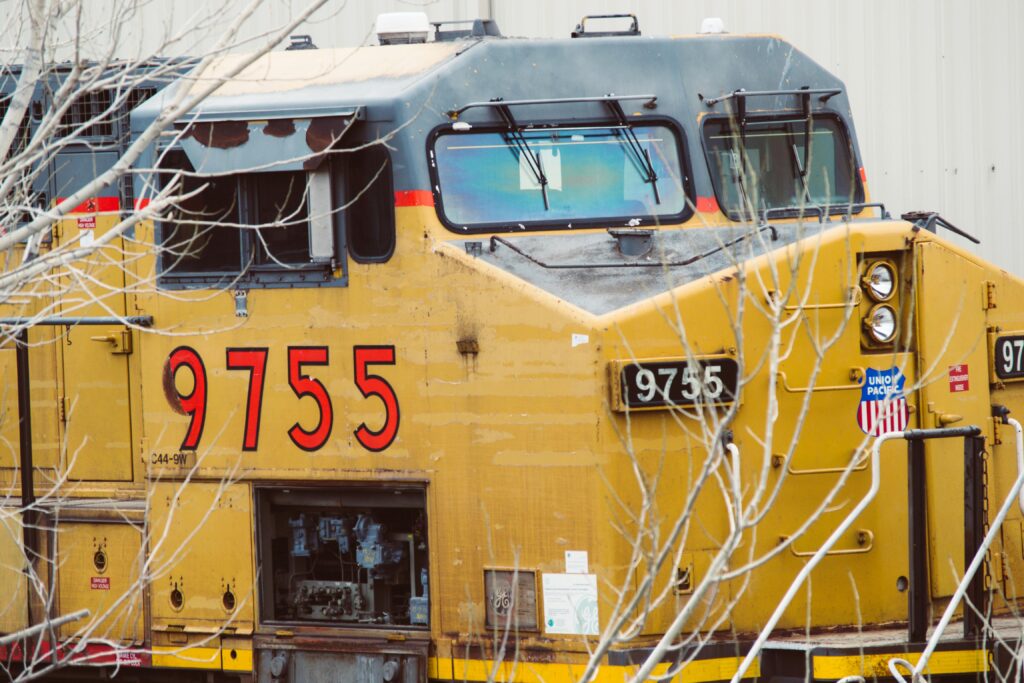புகையிரதத்தில் பயணம் செய்யும் போது அதன் முன்பக்கத்தில் பெரிய எழுத்துக்களால் எழுதப்பட்ட “WDM2”, “WAP4” போன்ற குறியீடுகளை நீங்கள் கவனித்திருக்கிறீர்களா?
பலருக்கும் இவை வெறும் எண்களாக மட்டுமே தெரிந்திருக்கும். ஆனால் உண்மையில், இந்த குறியீடுகள் ஒவ்வொன்றும் அந்த இஞ்சின் வகை, இயக்க சக்தி, பயன்பாடு மற்றும் மாடல் பற்றி முக்கிய தகவல்களை வழங்குகின்றன.
இப்போது அந்த குறியீடுகளின் நுட்பமான விளக்கத்தைப் பார்ப்போம்.
குறியீடுகளில் முதல் எழுத்து
முதல் எழுத்து புகையிரதம் ஓடும் பாதையின் வகையை குறிக்கிறது:
- W – அகன்ற இருப்புப் பாதை (Broad Gauge – 1,676 மிமீ)
- Y – மீட்டர் இருப்புப் பாதை (Metre Gauge – 1,000 மிமீ)
- Z – குறுகிய இருப்புப் பாதை (Narrow Gauge – 762 மிமீ)
- N – குறுகிய இருப்புப் பாதை (Narrow Gauge – 610 மிமீ)
எடுத்துக்காட்டு:
WDM2 இல் “W” என்பது அகன்ற இருப்புப் பாதையில் ஓடும் இஞ்சினை குறிக்கிறது.
குறியீடுகளில் இரண்டாவது எழுத்து
இரண்டாவது எழுத்து புகையிரதம் எந்த சக்தி மூலம் இயங்குகிறது என்பதை காட்டுகிறது.
D – டீசல் சக்தி
A – மின்சக்தி (மாறுதிசை மின்னோட்டம் – AC traction)
C – மின்சக்தி (நேர் மின்னோட்டம் – DC traction)
CA – இருவகை மின்னோட்டத்திலும் இயங்கும் (AC மற்றும் DC இரண்டும்)
B – பேட்டரி மூலம் இயங்கும்
குறிப்பு: நீராவி இஞ்சின்களில் இவ்வாறு இரண்டாவது எழுத்தாக சக்தி குறியீடு இருக்காது.
எடுத்துக்காட்டு:
WAP4 இல் “A” என்பது மின்சக்தி மூலம் இயக்கப்படும் என அர்த்தம்.
குறியீடுகளில் மூன்றாவது எழுத்து
மூன்றாவது எழுத்து அந்த இஞ்சின் பயன்பாட்டைப் பற்றியது:
G – சரக்கு ரயில் (Goods)
P – பயணிகள் ரயில் (Passenger)
M – இரண்டும் (Mixed – பயணிகள் மற்றும் சரக்கு இரண்டிற்கும் பயன்படும்)
U – புறநகர் ரயில்கள் (Suburban EMUs)
எடுத்துக்காட்டு:
WDG4 என்ற குறியீட்டில் “G” என்பது இது சரக்கு ரயில்களுக்கான இஞ்சின் என்பதைக் கூறுகிறது.
நான்காவது எண் மற்றும் அதன் அர்த்தம்
மூன்று எழுத்துகளுக்குப் பிறகு வரும் எண் அந்த இஞ்சின் மாடல் எண்ணைக் குறிக்கிறது.
WAP1 – WAP வகை இஞ்சின் முதல் தலைமுறை (Model 1)
WAP5 – ஐந்தாவது தலைமுறை மாடல்
மாடல் எண் உயர்ந்திருப்பின், அதற்கேற்ற வசதிகள், சக்தி மற்றும் திறனைப் பெற்றிருக்கும்.
டீசல் இஞ்சின்களில் கூடுதல் எழுத்துக்கள்
சில டீசல் இஞ்சின்களில் (புதிதாக உருவாக்கப்பட்ட இஞ்சின்களில், 2002க்கு பிறகு) நான்காவது எண் மற்றும் அதற்குப் பிறகு ஒரு கூடுதல் எழுத்து இருக்கும். இந்த இரண்டு விடயங்களும் அந்த இஞ்சினின் சக்தியை (Horsepower – HP) குறிக்கின்றன.
இதன் கணக்கிடும் முறை:
நான்காவது எண்ணை ஆயிரத்தால் பெருக்குங்கள்.
அதன்பின் வரும் எழுத்தின் மதிப்பை (A = 1, B = 2, C = 3, D = 4, E = 5, F = 6) நூறால் பெருக்கி கூட்டுங்கள்.
WDM3E
= (3 × 1000) + (5 × 100)
= 3000 + 500
= 3500 HP
இந்த மாதிரி கணக்கீடுகள் பொதுவாக சரக்கு மற்றும் பெருந்தொகை பயணிகள் இஞ்சின்களில் முக்கியமாகப் பயன்படுத்தப்படுகின்றன.
சிறப்பு குறியீடுகள்
சில புகையிரதங்களில், குறித்த சிறப்பு அம்சங்களை (Technical Features) குறிக்கும் கூடுதல் குறியீடுகளும் இருக்கும். குறிப்பாக, சரக்கு இஞ்சின்களில் இவை அடிக்கடி காணப்படும்.
எடுத்துக்காட்டு:
WAG7H – இதில் “H” என்பது உயர் வேகத்தை (High Speed) குறிக்கலாம்.
இந்திய மொழியில் குறியீடுகள்
வட இந்தியாவில் சில இடங்களில், இவை இந்தி எழுத்துக்களில் எழுதப்பட்டிருக்கும்.
அதாவது, ஆங்கிலத்தில் “WAP4” என்று எழுதுவது போலவே, இந்தியில் எழுதப்பட்டிருக்கும்.
அர்த்தம் மாறாது — ஒரே அமைப்பே இருக்கும்.
இப்போது நீங்கள் எந்த ரயிலில் பயணிக்கிறீர்களானாலும், அதன் முன்புறத்தில் உள்ள குறியீடுகளைப் பார்த்து அதற்கான:
பாதை வகை
சக்தி மூலாதாரம்
பயன்
மாடல் எண்
சக்தி அளவு
எல்லாவற்றையும் புரிந்துகொள்ள முடியும்!
அடுத்த முறை நீங்கள் புகையிரதம் பார்க்கும் போது, “WDP4D” அல்லது “WAG9” என்று பார்த்தால், அதன் வரலாறும், திறனும் உங்களுக்கே தெரிந்திருக்கும்!
மேலதிக தகவல்களுக்கு மாற்றம் செய்திகள்
Explanation of Train Engine Codes
When traveling by train, have you ever noticed the large letter codes written on the front of the engine, such as “WDM2” or “WAP4”?
For many, these might just seem like random letters and numbers. But in reality, these codes provide important information about the type of engine, its power source, usage, and model. Let’s now explore the detailed meaning behind these codes.

First Letter in the Code
The first letter indicates the type of railway track the train runs on:
- W – Broad Gauge Track (1,676 millimeters)
- Y – Metre Gauge Track (1,000 millimeters)
- Z – Narrow Gauge Track (762 millimeters)
- N – Narrow Gauge Track (610 millimeters)
Example:
In “WDM2”, the “W” means the engine operates on a broad gauge track.
Second Letter in the Code
The second letter indicates the power source of the train:
- D – Diesel-powered
- A – Electric (Alternating Current – AC traction)
- C – Electric (Direct Current – DC traction)
- CA – Dual Electric (both AC and DC traction)
- B – Battery-powered
Note: Steam engines will not have a power source code as the second letter.
Example:
In “WAP4”, the “A” signifies that it is powered by electricity (AC traction).
Third Letter in the Code
The third letter indicates the intended use of the engine:
- G – Goods (Freight Train)
- P – Passenger (Passenger Train)
- M – Mixed (for both passenger and freight)
- U – Suburban (EMU Trains)
Example:
In “WDG4”, the “G” indicates that the engine is used for freight trains.
Fourth Number and Its Meaning
After the three letters, the number that follows represents the model number of the engine.
Examples:
- WAP1 – First-generation model of WAP engines
- WAP5 – Fifth-generation model of WAP engines
A higher model number generally means better features, more power, and improved capabilities.
Additional Letters in Diesel Engines
Some diesel engines, especially those manufactured after 2002, have an additional letter following the model number.
These two elements together indicate the horsepower (HP) of the engine.
How to Calculate:
- Multiply the model number by 1000.
- Convert the following letter to a number (A = 1, B = 2, C = 3, D = 4, E = 5, F = 6) and multiply by 100.
- Add the two results.
Example:
- WDM3E
= (3 × 1000) + (5 × 100)
= 3000 + 500
= 3500 HP
This type of calculation is mainly used for engines built for freight and heavy-duty passenger services.
Special Codes
In some trains, especially freight engines, additional codes denote specific technical features.
Example:
- WAG7H – Here, “H” could denote a High-Speed feature.

Codes in Indian Languages
In northern parts of India, these codes may sometimes be written in Hindi script.
For example, instead of seeing “WAP4” in English, you might see it written in Hindi letters.
However, the meaning remains the same, regardless of the script.
Conclusion
Now, whenever you see the codes on the front of any train, you’ll be able to understand:
- The type of track
- The power source
- The purpose of the engine
- The model number
- The horsepower
The next time you spot a train engine with “WDP4D” or “WAG9”, you’ll easily know its background and technical capabilities! 🚂✨
For more Information Visit Us Maatram News



